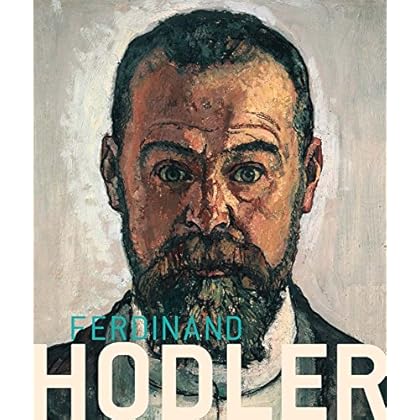Ferdinand Hodler: Elective Affinities from Klimt to Schiele
Category: Books,Arts & Photography,Individual Artists
Ferdinand Hodler: Elective Affinities from Klimt to Schiele Details
Swiss painter Ferdinand Hodler (1853–1918) was an exponent of Symbolism and Jugendstil, a pioneer of Expressionism and an innovator of monumental painting. Hodler’s significance can also be charted through those he influenced in Viennese Modernist circles, such as Gustav Klimt, Koloman Moser, Oskar Kokoschka and Egon Schiele. Hodler’s landscapes, self-portraits and portraits of women (such as the haunting series following the death of his lover Valentine Godé-Darel) bristle with barely restrained energy and color, paving the way for the expressionistic, decorative experiments of the next generation of artists. Published to accompany the artists’ most comprehensive exhibition in Austria since his resounding success at the 1904 Secession, Ferdinand Hodler: Elective Affinities from Klimt to Schiele explores the main themes of Hodler’s work and puts him in the context of his peers and followers.

Reviews
This is the second major monograph with an English text on this giant of European painting published in this decade. For the select few who are admirers of this artist, it sits alongside the superb volume issued by Hatje Cantz (for the Neue Galerie show in 2012), and thus, for serious students of early twentieth century painting, it is imperative.The conventional narrative of European painting of this period is centered on France and the Ecole de Paris, from the late impressionists through Picasso/Matisse. How misleading and incomplete the dominant histories are, is uncovered by the recognition of the titanic oeuvre of Hodler, incomparably broader and more ambitious than any contemporary. In addition to probably the best known part of his work, the landscapes, Hodler confronted the monumental figurative art of the Renaissance, specifically Michelangelo, in highly structured, monumental works (such as the history-driven murals in the Kunsthaus Zurich), but also in enormous canvases of unique symbolist (even proto-expressionist) synthesis such as the great "Night" (Kunstmuseum Bern). In these works, Hodler was undaunted by the long-fallowed field of the nude: men, women and adolescent (modelled on his son Hector) -- with little of the decorative or erotic intent of French art after David.Although Hodler was prolific, his works, in both public and private collections, can really be seen only in Switzerland, which is indeed an astonishing experience. Otherwise, this volume, and the 2013 Hatje Cantz, are the only windows in English through which to survey Hodler's corpus. This monograph results from the 2017 Vienna exhibition. The Musee d'Orsay show in 2007 has a catalogue in French only, and the superb centenary exhibitions in Geneva and Bern this year (Hodler died in 1918) have exhibition documentation without English language texts.


